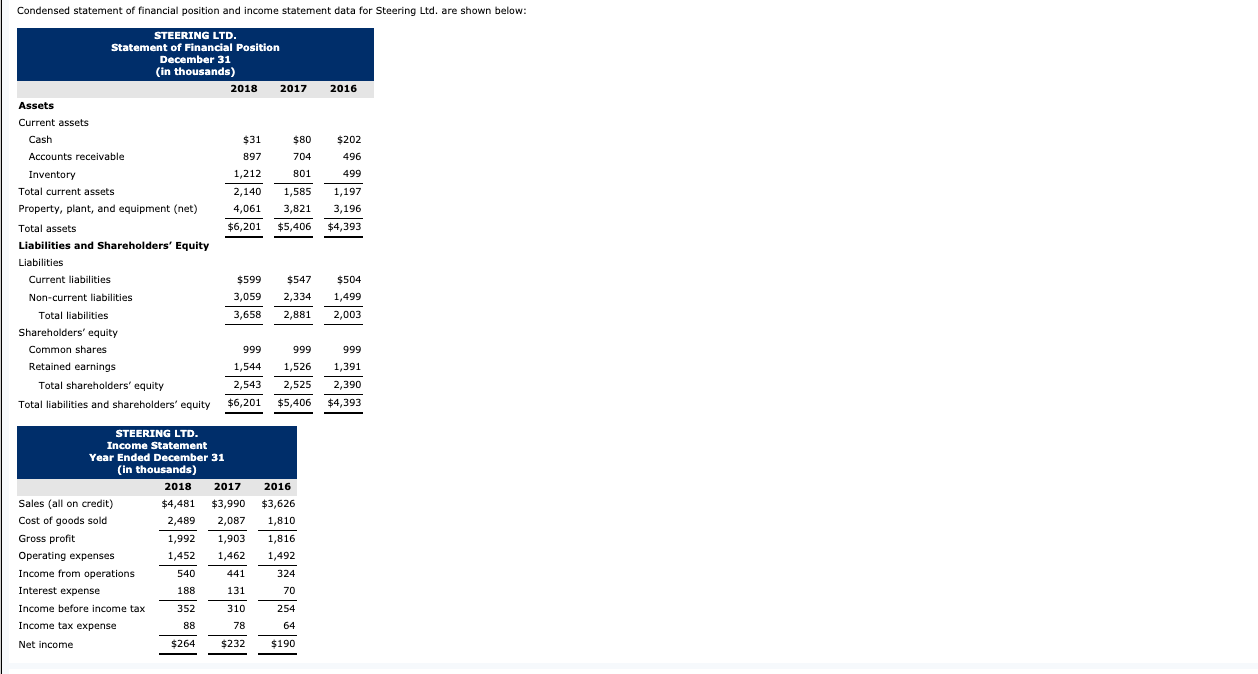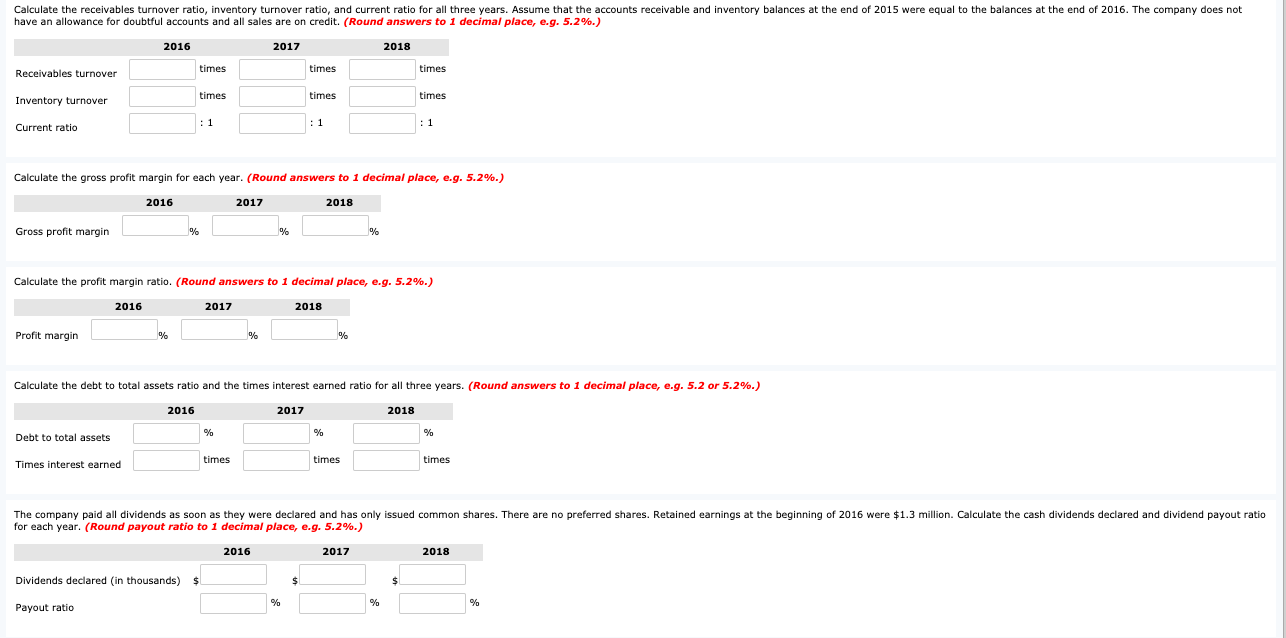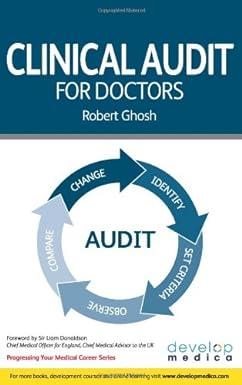


Condensed statement of financial position and income statement data for Steering Ltd. are shown below: 2016 $202 496 499 STEERING LTD. Statement of Financial Position December 31 (in thousands) 2018 2017 Assets Current assets Cash $31 $80 Accounts receivable 897 704 Inventory 1,212 801 Total current assets 2,140 1,585 Property, plant, and equipment (net) 4,061 3,821 Total assets $6,201 $5,406 Liabilities and Shareholders' Equity Liabilities Current liabilities $599 $547 Non-current liabilities 3,059 2,334 Total liabilities 3,658 2,881 Shareholders' equity Common shares 999 999 Retained earnings 1,544 1,526 Total shareholders' equity 2,543 2,525 Total liabilities and shareholders' equity $6,201 $5,406 1,197 3,196 $4,393 $504 1,499 2,003 999 1,391 2,390 $4,393 STEERING LTD. Income Statement Year Ended December 31 (in thousands) 2018 2017 Sales (all on credit) $4,481 $3,990 Cost of goods sold 2,489 2,087 Gross profit 1,992 1,903 Operating expenses 1,452 1,462 Income from operations 540 441 Interest expense 188 131 Income before income tax 352 310 Income tax expense 88 78 Net income $232 2016 $3,626 1,810 1,816 1,492 324 70 254 64 $264 $190 Calculate the receivables turnover ratio, inventory turnover ratio, and current ratio for all three years. Assume that the accounts receivable and inventory balances at the end of 2015 were equal to the balances at the end of 2016. The company does not have an allowance for doubtful accounts and all sales are on credit. (Round answers to 1 decimal place, e.g. 5.2%.) 2016 2017 2018 Receivables turnover times times times times times times Inventory turnover : 1 Current ratio : 1 : 1 Calculate the gross profit margin for each year. (Round answers to 1 decimal place, e.g. 5.2%.) 2016 2017 2018 Gross profit margin % % % Calculate the profit margin ratio. (Round answers to 1 decimal place, e.g. 5.2%.) 2016 2017 2018 Profit margin % % % Calculate the debt to total assets ratio and the times interest earned ratio for all three years. (Round answers to 1 decimal place, e.g. 5.2 or 5.2%.) 2016 2017 2018 % Debt to total assets % % Times interest earned times times times The company paid all dividends as soon as they were declared and has only issued common shares. There are no preferred shares. Retained earnings at the beginning of 2016 were $1.3 million. Calculate the cash dividends declared and dividend payout ratio for each year. (Round payout ratio to 1 decimal place, e.g. 5.2%.) 2016 2017 2018 Dividends declared in thousands) $ $ % % % Payout ratio Calculate the asset turnover for each of the three years. Assume that total assets at the end of 2015 were equal total assets at the end of 2016. Multiply the asset turnover for each year by the profit margin for each year from part (c) above to determine the return on assets for each year. (Round asset turnover to 2 decimal palces, e.g. 5.26 and return on assets to 1 decimal place, e.g. 5.2%.) 2016 2017 2018 times Asset turnover times times % % % Return on assets Calculate the return on common shareholders' equity for each year. Assume that common shareholders' equity at the end of 2015 was equal to that amount for 2016. (Round answers to 1 decimal place, e.g. 5.2%.) 2016 2017 2018 Return on common shareholders' equity %









